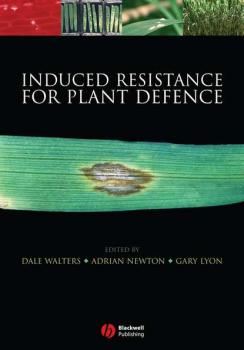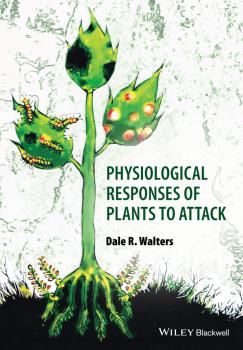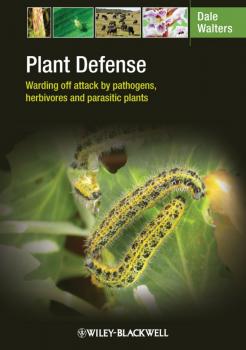ТОП просматриваемых книг сайта:
Dale Walters
Список книг автора Dale WaltersАннотация
Plant diseases worldwide are responsible for billions of dollars worth of crop losses every year. With less agrochemicals being used and less new fungicides coming on the market due to environmental concerns, more effort is now being put into the use of genetic potential of plants for pathogen resistance and the development of induced or acquired resistance as an environmentally safe means of disease control. This comprehensive book examines in depth the development and exploitation of induced resistance. Chapters review current knowledge of the agents that can elicit induced resistance, genomics, signalling cascades, mechanisms of defence to pests and pathogens and molecular tools. Further chapters consider the topical application of inducers for disease control, microbial induction of pathogen resistance, transgenic approaches, pathogen population biology, trade offs associated with induced resistance and integration of induced resistance in crop protection. The book concludes with a consideration of socio-economic drivers determining the use of induced resistance, and the future of induced resistance in crop protection.
Аннотация
Despite the research effort put into controlling pathogens, pests and parasitic plants, crop losses are still a regular feature of agriculture worldwide. This makes it important to manage the crop appropriately in order to maximise yield. Understanding the relationship between the occurrence and severity of attack, and the resulting yield loss, is an important step towards improved crop protection. Linked to this, is the need to better understand the mechanisms responsible for reductions in growth and yield in affected crops. Physiological Responses of Plants to Attack is unique because it deals with the effects of different attackers – pathogens, herbivores, and parasitic plants, on host processes involved in growth, reproduction, and yield. Coverage includes effects on photosynthesis, partitioning of carbohydrates, water and nutrient relations, and changes in plant growth hormones. Far from being simply a consequence of attack, the alterations in primary metabolism reflect a more dynamic and complex interaction between plant and attacker, sometimes involving re-programming of plant metabolism by the attacker. Physiological Responses of Plants to Attack is written and designed for use by senior undergraduates and postgraduates studying agricultural sciences, applied entomology, crop protection, plant pathology and plant sciences. Biological and agricultural research scientists in the agrochemical and crop protection industries, and in academia, will find much of use in this book. All libraries in universities and research establishments where biological and agricultural sciences are studied and taught should have copies of this exciting book on their shelves
Аннотация
Plants are sources of nourishment for thousands of fungi, bacteria, invertebrates, vertebrates, and other plants. Plants possess a truly remarkable diversity of mechanisms to fend off attackers and recent research has shown just how complex and sophisticated these defense mechanisms can be. Plant Defense provides comprehensive coverage of the range of different organisms that plants need to fend off, describes how plants coordinate their defenses against multiple attacks, explains the evolution of defense in plants, and how plant defences are exploited in crop protection strategies. Plant Defense: Covers plants’ defenses against pathogens, pests, and parasitic plants: together in one book Brings together succinct, cutting edge information in a user-friendly format Gives an understanding of how plants ward off attacks from multiple enemies Is written by Dale Walters, an internationally known and respected researcher and teacher in crop protection, who distils his wealth of knowledge in a novel and exciting way Is an essential purchase for all those involved in plant protection around the globe Plant Defense is primarily designed for use by upper undergraduates and post graduates studying crop protection, agricultural sciences, applied entomology, plant pathology, and plant sciences. Biological and agricultural research scientists in the agrochemical and crop protection industries, and in academia, will find much of great use in this excellent new book. Libraries in all universities and research establishments where agricultural and biological sciences are studied and taught should have multiple copies of this very valuable book on their shelves.
Аннотация
The control of diseases in crops is still largely dominated by the use of fungicides, but with the increasing incidence of fungicide resistance, plus mounting concern for the environment resulting from excessive agrochemical use, the search for alternative, reliable methods of disease control is gaining momentum. The purpose of this important book is to examine the development and exploitation (or potential for exploitation) of a range of non-chemical approaches to disease control, with a focus on the need for a greater understanding of crop ecology as the basis for effective disease control in the field. Chapters in the book, written by international experts in the subject area, include coverage of: biological control methods host-plant resistance the exploitation of tolerance and the use of bacteriophages Carefully edited by Professor Dale Walters, widely respected for his work in the area of crop protection, Disease Control in Crops is an essential reference book for plant pathologists, microbiologists, plant and agricultural scientists and crop protection specialists, including those working within, and providing consultancy to, the agrochemical industries. Libraries in all universities and research establishments where biological sciences and agriculture are studied and taught should have copies of this timely publication on their shelves.




